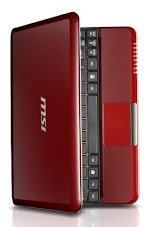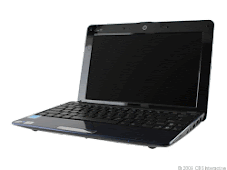KENNEDY SPACE CENTER, Fla.--Running four days late, the shuttle Discovery roared to life and shot into space overnight Friday, lighting up the night sky with a rush of fire as it set off on a 13-day mission to deliver 7.5 tons of supplies and equipment to the International Space Station.
With commander Frederick "Rick" Sturckow and pilot Kevin Ford monitoring the computer-controlled ascent, Discovery's twin solid-fuel boosters ignited at 11:59 p.m. EDT, kick-starting the crew's eight-and-a-half-minute ride to orbit with a rush of 5,000-degree flame.

Space shuttle Discovery roars to life and blasts off on space station resupply mission.
(Credit: NASA TV)Taking off at roughly the moment Earth's rotation carried launch pad 39A into the plane of the space station's orbit, Discovery quickly climbed above its service gantry, rolled about its long axis, and thundered away on a trajectory paralleling the East Coast.
Discovery's launching came four days after a scrub Tuesday because of bad weather and back-to-back delays caused by concern about an 8-inch hydrogen valve in the shuttle's engine compartment.
The shuttle was cleared for launch late Friday after tests showed the valve was working normally. NASA managers approved a waiver in case of additional trouble, but the valve closed on command during fueling and there were no other problems.
Including the weather. Despite clouds and threatening storms to the south, conditions improved as launch time approached and the shuttle was cleared for flight.
Visible for hundreds of miles around, Discovery put on a spectacular show for area residents and tourists as it raced across the sky atop twin pillars of fire from its giant boosters.
Two minutes after liftoff, their propellant expended, the boosters dropped away, and Discovery continued toward orbit under the power of its three main engines, a brilliant "star" rivaling Venus in brightness as it streaked toward the horizon.

A NASA tracking camera locks onto the shuttle Discovery's main engines and solid-fuel boosters during launch.
(Credit: NASA TV)During the shuttle Endeavour's launching July 15, an unusual amount of foam insulation fell from the ship's external tank. While Endeavour's heat shield suffered no major impact damage, NASA managers ordered extensive testing to make sure Discovery's tank was safe to launch.
Live television views from a camera mounted on the side of the giant tank showed nothing obvious falling away as the shuttle accelerated out of the dense lower atmosphere.
But it will take several days for engineers to determine the health of Discovery's heat shield based on a thorough assessment of launch photography, data collected by the crew in orbit and close-up photos of the shuttle's belly during final approach to the space station.
In any case, by the time Discovery's boosters were jettisoned the shuttle was climbing out of the dense lower atmosphere, which can impart high impact velocities, and the remainder of the shuttle's ascent was uneventful.
Six-and-a-half minutes after booster separation, Discovery's main engines shut down and the shuttle slipped into its planned preliminary orbit. If all goes well, Sturckow will guide the orbiter to a docking with the International Space Station around 9 p.m. Sunday.
Along with replacing a 1,800-pound ammonia coolant tank in the station's main power truss during their first two spacewalks, the astronauts will deliver two sophisticated science racks, one devoted to fluid physics and the other to materials science, an experiment sample freezer, a new air revitalization rack, a crew sleep station and a treadmill named after comedian Stephen Colbert.

Safely in orbit, Discovery separates from its external tank.
(Credit: NASA TV)In addition to delivering needed supplies and equipment, Discovery also is ferrying astronaut Nicole Stott to the lab complex. She will replace space station flight engineer Timothy Kopra, launched to the lab complex in July and returning to Earth in Stott's place.
Remaining behind when Discovery departs, Stott will join Expedition 20 commander Gennady Padalka, NASA flight engineer Michael Barratt, cosmonaut Roman Romanenko, Canadian Robert Thirsk and European Space Agency astronaut Frank De Winne as a member of the station's full-time crew.
Only six shuttle flights are planned after Discovery's mission, all of them devoted to finishing the space station and loading it with supplies, spare parts and other equipment to protect against failures after the shuttle fleet is retired.
"We're bringing up seven racks that will be transferred to the space station," said European Space Agency astronaut Christer Fuglesang, making his second shuttle flight. "Three of them are really to keep the station's six crew members well and alive. There's a crew quarters, a treadmill--you have to exercise twice a day if you stay in space up to six months--and then there's a system to keep the air clean. Then we're bringing up three racks dedicated to science. And of course, there's a lot of food and other things."
Three spacewalks are planned during Discovery's visit, one by Olivas and Stott on Tuesday and two by Olivas and Fuglesang on Thursday and next Saturday. If all goes well, Discovery will undock from the space station September 8 and land back at the Kennedy Space Center around 7:10 p.m. on September 10.









































